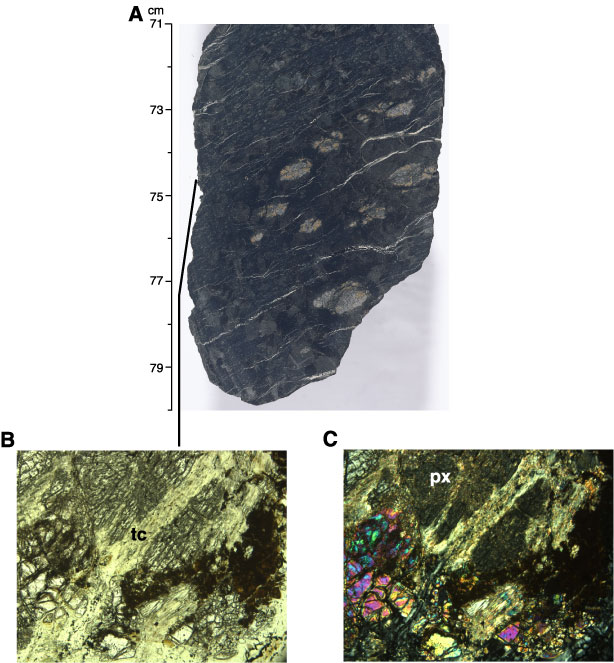
Figure F38. Locally, fresh pyroxene and olivine are preserved in serpentinized harzburgite recovered from Hole 1270C. A. Photograph of hand specimen of serpentinized harzburgite. Some of the orthopyroxene crystals have an orange-brown halo indicative of alteration under low-temperature conditions (seafloor weathering). Adjacent to some of these orthopyroxenes there are minor relics of fresh olivine (interval 209-1270C-1R-1, 71–80 cm). B, C. Photomicrographs showing features from the interval in A (Sample 209-1270C-1R-1, 72–75 cm). (B) Orthopyroxene has been partially replaced by talc (tc) prior to serpentinization. Some of the olivine adjacent to the pyroxene is preserved, indicating that serpentinization did not go to completion. Dark brown clays + Fe oxyhyroxides (arrow) partially replaced olivine during seafloor weathering (plane-polarized light: blue + dark gray filters; field of view = 1.4 mm; image 1270C_22). (C) Serpentine (arrow) formed at the expense of olivine. The partially talc-altered pyroxene (px) has not been affected by serpentinization (cross-polarized light: blue filter; field of view = 1.4 mm; image 1270C_23).



![]()